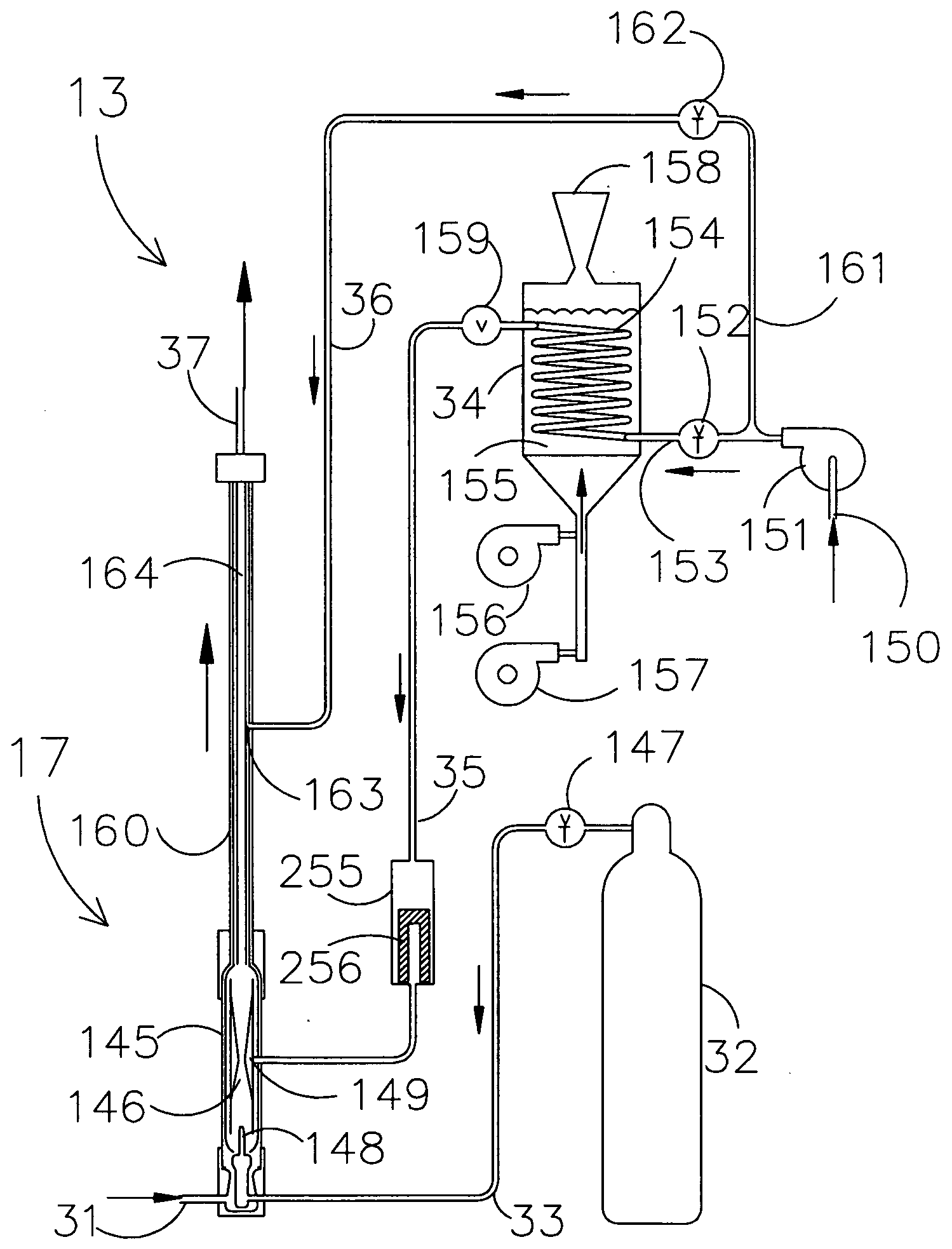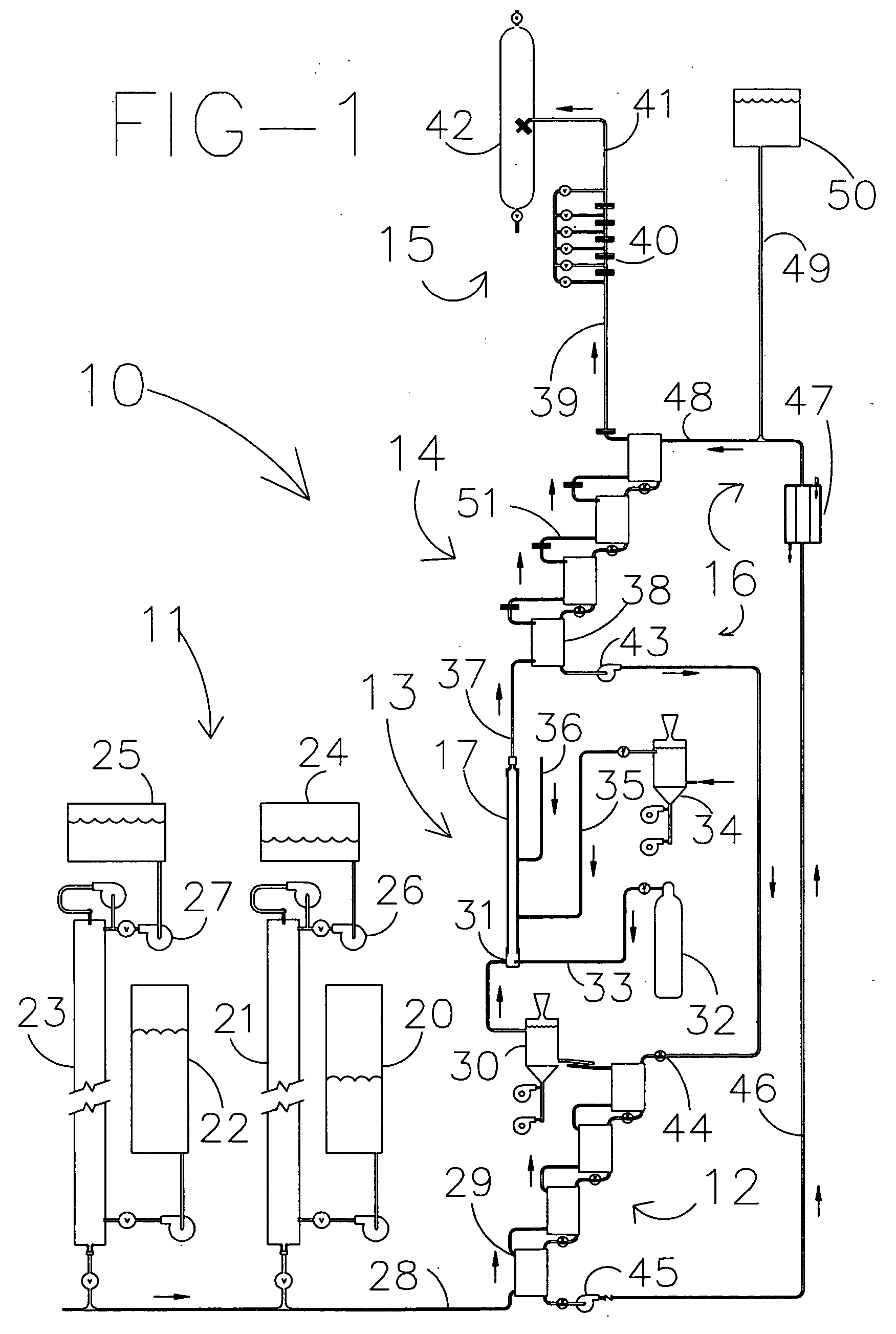Method and apparatus for conducting supercritical wet oxidation reactions contained within a fluid envelope
a technology of supercritical wet oxidation and fluid envelope, which is applied in the direction of supercritical condition processes, multi-stage water/sewage treatment, other chemical processes, etc., can solve the problem that the degree of oxidation of organic materials can be so complete, the supercritical water will not retain materials such as minerals and salts in solution, and the organic material is undetectable in the resultant fluid
- Summary
- Abstract
- Description
- Claims
- Application Information
AI Technical Summary
Benefits of technology
Problems solved by technology
Method used
Image
Examples
Embodiment Construction
[0028]A supercritical wet oxidation apparatus assembly for processing, via wet combustion, of a fluid mixture containing oxidizable materials in a supercritical fluid, such as water, according to the present invention is schematically shown in FIG. 1 and generally indicated by the numeral 10. The apparatus assembly 10 includes a pressurizing sub-assembly, generally indicated by the numeral 11, which pressurizes the fluid mixture up to the required supercritical pressure of about 4,000 pounds per square inch. The sub-assembly 11 delivers the fluid mixture to be processed to a preheating sub-assembly, generally indicated by the numeral 12. After preheating, the fluid mixture is delivered to a supercritical reaction vessel sub-assembly, generally indicated by the numeral 13, which includes a supercritical reaction vessel 17 with appurtenances. The treated fluid mixture is then transferred to a post treatment cooling and initial pressure dropping sub-assembly, generally indicated by num...
PUM
| Property | Measurement | Unit |
|---|---|---|
| size | aaaaa | aaaaa |
| pressures | aaaaa | aaaaa |
| temperature | aaaaa | aaaaa |
Abstract
Description
Claims
Application Information
 Login to View More
Login to View More - R&D
- Intellectual Property
- Life Sciences
- Materials
- Tech Scout
- Unparalleled Data Quality
- Higher Quality Content
- 60% Fewer Hallucinations
Browse by: Latest US Patents, China's latest patents, Technical Efficacy Thesaurus, Application Domain, Technology Topic, Popular Technical Reports.
© 2025 PatSnap. All rights reserved.Legal|Privacy policy|Modern Slavery Act Transparency Statement|Sitemap|About US| Contact US: help@patsnap.com



